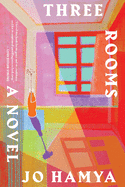
| Publisher: | Mariner Books | |
| Genre: | Women, Feminist, City Life, Literary, Fiction | |
| ISBN: | 9780358572091 | |
| Pub Date: | August 2021 | |
| Price: | $25 |
| Starred | Fiction |
by Jo Hamya
"What had a rented room in Oxford and a sofa in London made me?" asks the narrator of Jo Hamya's short, subtle, yet unnerving debut novel, Three Rooms, in which an unnamed woman of color attempts to eke out a writing career but cannot afford to put down roots. Starting as a research assistant in Oxford, where she rents a small apartment in a historic building, she attempts to ward off the feeling that she belongs nowhere, that she possesses nothing. That feeling only hardens and deepens into bitter reality when she moves on to work at a society magazine, in which her shallow copyediting role hardly makes up for the sofa she's sleeping on in a stranger's flat. She wants to be intellectual, to be political, but she finds herself regurgitating the hot takes she reads online and obsessing over a younger white woman's Instagram presence--in particular, the way this woman can mold herself to whatever environment she happens to be in, as if it takes her no effort to lay claim to a space. Of course, it doesn't take her any effort. She has been given the tools in life to belong.
Three Rooms is clever enough not to make any vast moral indictments, nor does it spoon-feed readers by telling them what conclusions to make from its generally upsetting premise. No character avoids Hamya's ire, least of all the narrator herself. But Hamya layers in enough social and political context to conjure an ever-present, unsettling buzz under the audience's skin. This is not an easy, enjoyable novel, though it is a brilliant one, which is, of course, precisely the point. --Lauren Puckett, freelance writer
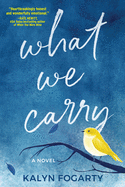
| Publisher: | Alcove Press | |
| Genre: | Women, Psychological, Small Town & Rural, Family Life, Marriage & Divorce, Fiction | |
| ISBN: | 9781643858470 | |
| Pub Date: | August 2021 | |
| Price: | $16.99 |
| Fiction |
by Kalyn Fogarty
In What We Carry, Kalyn Fogarty compassionately examines how the grief and loss of the shattering experience of miscarriage can be far-reaching and disabling for all in a family.
Cassidy Morgan's life "had rolled along on a very specific track," and she seemed to have it all--a tender, loving and supportive husband, Owen, and a rewarding and fulfilling career as an equine veterinarian. Family was next on the list--infertility was not.
When the young, Boston couple finally conceive, they are filled with the glowing prospect of welcoming their first child. But at 20 weeks, Cassidy loses the baby--a son. The devastating impact is wrenching for the couple, who are challenged in dealing with loss, grief and their own identities in the aftermath. The tragedy further resonates with Cassidy's contentious mother, Joan, and Cassidy's sister, Clare, who join the couple in feeling powerless--and who also make a myriad of mistakes and verbal missteps in the wake of dealing with the raw sense of emotion spurred on by the heartbreak. When the couple becomes pregnant again, fear and hope rage a tug-of-war that shrouds joy, heightening everyone's trepidation toward the harrowing prospect of welcoming another new life.
Fogarty (Sometime, Somewhere) displays great wisdom, effectively presenting her complex, poignant story through alternating first-person points of view of all involved. Layers of insightful, beautifully rendered prose and absorbing monologues shine a light through a multi-faceted prism of loss and grief that ultimately reflects the hopeful beauty of learning how to start over. --Kathleen Gerard, blogger at Reading Between the Lines

| Publisher: | Harper Perennial | |
| Genre: | Women, Family Life, Humorous, General, Fiction | |
| ISBN: | 9780063084445 | |
| Pub Date: | August 2021 | |
| Price: | $16.99 |
| Fiction |
by Katherine Ashenburg
Her Turn by Katherine Ashenburg (Sofie & Cecilia) is a playful yet insightful look at a journalist as she attempts finally to face the fault lines in her emotional life. Liz seems to have all the hallmarks of an enviable existence: a full social calendar, a loving relationship with her college-aged son and a career as the editor of the newspaper's My Turn column. But beneath the surface, Liz is still struggling with the emotional fallout of her husband leaving her for another woman years ago. When Nicole, the woman for whom Liz's husband left her, writes into My Turn with a story about her marriage, Liz begins a questionable correspondence with her, never letting on that she's the columnist.
Equal parts hilarious and emotionally astute, Her Turn offers both commercial appeal and intelligent social commentary. Liz, her current lover, her ex-husband and Nicole all appear as complex and sympathetic figures, suggesting that even in the stereotypical scenario of a husband leaving his wife for another woman, no one is the clear villain. And while Liz's emotional journey is the central plot, the novel takes entertaining diversions into the world of contemporary female "empowerment" that Liz finds herself beholden to. From making her "hair look deliberate rather than wayward" to reading forgiveness how-to books that advocate for "twenty minutes of meditation, followed by five minutes [of focusing] on the wrong that had been done to her," Liz's life is filled with everyday moments that poke fun at what it means to perform ideal womanhood. --Alice Martin, freelance writer and editor
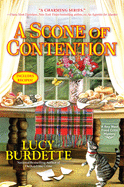
| Publisher: | Crooked Lane Books | |
| Genre: | Mystery & Detective, Cozy - General, Cozy - Culinary, Fiction, Women Sleuths | |
| ISBN: | 9781643856247 | |
| Pub Date: | August 2021 | |
| Price: | $26.99 |
| Mystery & Thriller |
by Lucy Burdette
Key West food critic Hayley Snow can't wait to sample classic Scottish dishes on her long-awaited honeymoon. But it wouldn't be a Hayley adventure without a little family drama--and a dash of murder on the side. Lucy Burdette (The Key Lime Crime) serves up humor, long-hidden secrets and a few wild coincidences in her 11th Key West Food Critic mystery, A Scone of Contention.
It's an unusual honeymoon for Hayley and Nathan: they're staying with his sister, Vera, and have Nathan's mother and Hayley's octogenarian friend Miss Gloria in tow. Determined to enjoy the sights and scones of Scotland (while Nathan plays golf), Hayley is reluctantly drawn into the complex social dynamic among Vera and her friends. An ill-fated book project has caused some tension in the group, but things get really strange when a man falls to his death from the massive Falkirk Wheel, and it turns out he may have connections to Vera and her colleagues.
Cheerful and determined as ever, Hayley starts poking around for a solution, while squeezing in as much sightseeing and Scottish history as she can. Burdette's love for historical detail sometimes threatens to overwhelm the plot, but longtime readers of the series will enjoy seeing Hayley and Miss Gloria in a new setting. The mystery does get solved, along with an unrelated subplot taking place back home in Key West--but the real charm of this installment is Hayley's wide-eyed enjoyment of all things Scottish, especially the scones. (Recipes included, as always.) --Katie Noah Gibson, blogger at Cakes, Tea and Dreams
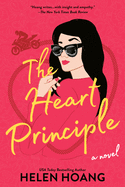
| Publisher: | Berkley | |
| Genre: | Romantic Comedy, Family Life, Romance, Contemporary, General, Multicultural & Interracial, Fiction | |
| ISBN: | 9780451490841 | |
| Pub Date: | August 2021 | |
| Price: | $16 |
| Romance |
by Helen Hoang
Helen Hoang's emotionally intense The Heart Principle opens with violinist Anna Sun seeking therapy for having hit a mental brick wall. After becoming Internet famous due to a viral video, she can no longer find the joy in playing, and questions why she can't stop trying to please everyone in her life, including the boyfriend who suddenly wants to date other people. Should she do the same?
Quan Diep, Khai's brother from Hoang's The Bride Test, still feels vulnerable after a health scare left him scarred, but his cousin Michael, from Hoang's The Kiss Quotient, convinces Quan to sign up for a dating app to get back in the game. On one app, Quan sparks to Anna, whose profile says, "Looking to spend an uncomplicated evening with someone nice. Just one night, please."
The two arrange to meet up, but Anna panics and the date doesn't go as planned. They end up texting comments to each other while watching nature programs together, safe in their respective homes. Their friendship grows slowly, until a family crisis forces Anna to decide what she wants from life and who she wants to be with.
In the author's note, Hoang says The Heart Principle is half memoir, that "Anna's struggles were mine. Her pain was mine." This statement makes the novel even more commendable, for Hoang doesn't shy away from Anna's struggles with mental health, personal loss and artistic burnout. Anna goes to some dark places, but the author shows that romance can bloom in unexpected ways and reminds readers that happily-ever-after endings are different for everyone. --Elyse Dinh-McCrillis, blogger at Pop Culture Nerd
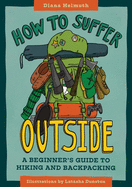
| Publisher: | Mountaineers Books | |
| Genre: | Personal & Practical Guides, Walking, Reference, Sports & Recreation, Topic, Hiking, Humor, Sports | |
| ISBN: | 9781680513110 | |
| Pub Date: | October 2021 | |
| Price: | $18.95 |
| Starred | Sports |
by Diana Helmuth, illust. by Latasha Dunston
Many people claim they venture into nature to find themselves, but Diana Helmuth doesn't buy it. In How to Suffer Outside, her helpful and hilarious guide to all things backpacking, Helmuth proposes a different reality: "In nature, everything is distinctly not about you. Wake up--no one cares. Eat breakfast--no one cares. Pack up your shit--no one cares." Instead of a strike against roughing it, this is actually an endorsement. For Helmuth, journeying into the wilderness proves her endurance and strength: "Waking up after that first night and realizing you're alive, and still have ten fingers and ten toes, is the greatest rush of self-confidence I've ever experienced." With empathetic, good-natured humor, her book critiques modern hiking culture while outlining everything beginners need to know, such as buying high-quality gear on a budget, purifying water and even pooping outdoors. "Yes," she quips about the latter, "it deserves its own chapter."
Helmuth grew up backpacking with her mother, and she attended a high school program geared toward wilderness survival. She has also hiked extensively all over the world. For these reasons, sometimes her claims that she's just like the average reader can feel a bit disingenuous--but it's also this outdoorsy cred that makes her trustworthy. After finishing this book, first-time backpackers can have relative certainty that they will not climb a mountain in jeans that will later become drenched and cause hypothermia. Instead, they'll get the chance to be alone with their thoughts--a rare gift, even if that's where the self-discovery stops. --Angela Lutz, freelance reviewer
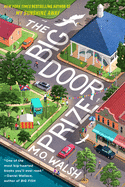
| Publisher: | Putnam | |
| Genre: | Family Life, General, Literary, Southern, Fiction | |
| ISBN: | 9780735218505 | |
| Pub Date: | August 2021 | |
| Price: | $17 |
| Now in Paperback |
by M.O. Walsh
In The Big Door Prize, M.O. Walsh (My Sunshine Away) crafts a surprising and heartwarming contemporary drama about looking back and looking forward. A machine, DNAMIX, shows up in a small Louisiana town to reveal "your potential in life, what your body and mind are capable of doing."
Cherilyn's DNAMIX readout is "Royalty," and she immediately believes the machine sees beyond her housewife exterior. Her husband, Douglas, for his part, is reluctant to use the machine but acknowledges that he, too, has "hit a wall in his life" and that it's time to "make big-picture changes." Juxtaposed with adult angst is a sympathetic portrait of the prospects for contemporary teenagers in a world not of their making. Jacob, a high-schooler, grapples with life after the accidental death of his popular twin brother, Toby, and is drawn into a plot that creates unexpected suspense involving the entire town.
The adults in this story have been unwilling and unused to contemplating their life choices, and their discomfort, by turns funny and melancholy, will be familiar to many readers. Walsh's suggestion that teenagers, closely watching the adults around them, have a deeper and more sophisticated understanding of the compromises they'll make as adults is often painfully accurate. Because each "choice we make today is an extension of, and an opportunity arisen from, the choices we have previously made and will make in the future," readers of this singular, nuanced story will, quite possibly and without a machine as prompt, undertake their own personal reflection. --Cindy Pauldine, bookseller, the river's end bookstore, Oswego, N.Y.
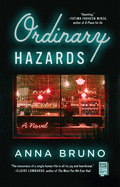
| Publisher: | Washington Square Press | |
| Genre: | Psychological, Women, Family Life, General, Literary, Fiction | |
| ISBN: | 9781982126964 | |
| Pub Date: | August 2021 | |
| Price: | $17 |
| Now in Paperback |
by Anna Bruno
The entirety of Ordinary Hazards takes place in one evening at a local bar, "the kind of bar that doesn't exist in cities, a peculiarity of a small town that has seen better days." The lone woman in a ragtag bunch of locals there, Emma banters with the other regulars and dodges texts from her concerned friends, perched on a stool as two versions of herself: "the woman I am and the woman I used to be." As she vacillates between these women within herself, she recalls the career, the marriage, the friends, the son and the ambition that brought her to this precise moment in this bar in this town: 5 p.m. at The Final Final in upstate New York.
From the outset, it is clear that something about this situation is very wrong. That 5 p.m. moment is rife with tension, though it takes the completion of Anna Bruno's perfectly paced debut novel to understand why. Over the course of the next eight hours, through Emma's recollections and her interactions with the rest of the crew at The Final Final, it becomes clear that everything that brought Emma to this moment is now gone. The unnamed feeling bubbling beneath the surface of Emma's night of drinking is grief, and everything that accompanies it: blame, guilt, shame, sadness, anger, despair and a prevailing sense of "if only." Ordinary Hazards, named a Best Debut Novel of 2020 by Library Journal, is a kaleidoscopic story of the best variety, spinning into and out of itself as it explores grief, love and loss in ways that will haunt readers long past the last page. --Kerry McHugh, freelance writer
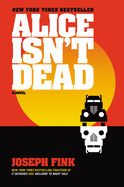
| Publisher: | Harper Perennial | |
| Genre: | Horror, Humorous, Fantasy, General, Literary, Suspense, Supernatural, Thrillers, Fiction, Action & Adventure | |
| ISBN: | 9780062844149 | |
| Pub Date: | August 2021 | |
| Price: | $16.99 |
| Now in Paperback |
by Joseph Fink
Welcome to Nightvale podcast creator and writer Joseph Fink expands on the hit serial podcast Alice Isn't Dead in this flesh-crawling horror thriller with a heart.
"This isn't a story," Fink begins. "It's a road trip." When her wife, Alice, disappeared, Keisha searched for months, eventually held a funeral and then tried to overcome her grief in a world that no longer made sense. Things turned upside-down again when she began noticing Alice on the news, always in the crowd at the scene of tragedies across the United States. A year and a half later, Keisha works as a long-haul trucker so she can search the country for Alice.
On the road, she attracts the attention of an unkempt creature in a dirty polo bearing the word "thistle," who eats a living victim in front of her. Though human in appearance, the Thistle Man is "like a boogeyman from a vaguely recalled nightmare," and police officers turn a blind eye to his activities. Stalked by the predator, Keisha picks up a teen girl, Sylvia, who lost her mother to the Thistle Man. Their ensuing investigation puts Keisha on the path to uncovering a dark world hidden within the shadows of our own.
In his third novel, Fink (author, with Jeffrey Cranor, of It Devours) achieves an eerie, off-kilter atmosphere that induces a constant sense of paranoia. Fans of the podcast will no doubt enjoy this expansion of Keisha's quest, but readers who have no familiarity with the story will likely appreciate its surprises and chills even more. --Jaclyn Fulwood, blogger at Infinite Reads
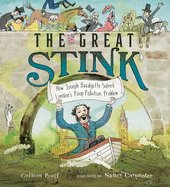
| Publisher: | Margaret K. McElderry Books | |
| Genre: | Biography & Autobiography, General | |
| ISBN: | 9781534449299 | |
| Pub Date: | August 2021 | |
| Price: | $17.99 |
| Starred | Children's & Young Adult |
by Colleen Paeff, illust. by Nancy Carpenter
Colleen Paeff's debut is quite pleasant, despite the fact that she's writing about something best described as noxious: "No matter what you call it--feces, stool, discharge, dung, number two, or excrement," Paeff chronicles London's poop pollution problem and the innovative engineer who devised the city's sewer system, Joseph Bazalgette. Accompanying Paeff's playful historical narrative are Nancy Carpenter's hilariously apt illustrations, presenting this nose-wrinkling moment in London's history. Together author and illustrator make a revolting topic utterly enticing.
Paeff takes readers through the early 19th century in London: population growth, the cholera outbreaks and the birth of Bazalgette. She progresses swiftly to mid-century, highlighting the events that lead to Bazalgette's new sewer system and evidence of its effect on cholera. Paeff's pacing is gripping and readers will eagerly await the fate of the engineering marvel, as well as that of the Londoners who can't safely breathe the air. Carpenter (A Letter to My Teacher) uses watercolor and ink to depict in lively images the drama of the "Great Stink": a man swimming in a poop-filled river, Queen Victoria rushing away from the foul waterway, Bazalgette's enthusiasm for his solution. Carpenter's shift in color scheme from before Bazalgette's sewers to after conveys a sense of relief for both city and readers.
This delightful picture book with a malodorous subject concludes with information on the current state of water pollution and ways the audience can help to make a difference in their daily lives. The Great Stink is a surprisingly sweet traipse through history. --Jen Forbus, freelancer
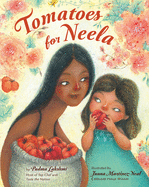
| Publisher: | Viking Books for Young Readers | |
| Genre: | Travel, Cooking & Food, General (see also headings under Social Themes), Family, Juvenile Fiction | |
| ISBN: | 9780593202708 | |
| Pub Date: | August 2021 | |
| Price: | $17.99 |
| Children's & Young Adult |
by Padma Lakshmi, illust. by Juana Martinez-Neal
A mother and daughter celebrate their connections to culture through fresh food in Padma Lakshmi and Juana Martinez-Neal's lush and reverential picture book, Tomatoes for Neela.
Late summer brings Neela and Amma to an outdoor market where they admire and collect a bounty of tomatoes. Mother and child return home to prepare far-away Paati's sauce for canning, and the global union of shared recipes eliminates time and distance between the three generations. In her debut picture book, Lakshmi's kitchen savvy lends authenticity to cooking scenes that highlight the senses: the farmer's market yields "a bag bursting with plump, juicy plum tomatoes'' that simmer with "barely golden" garlic in a sauce "they would savor all winter," then share with Paati when she visits. While tomatoes are the focus here, Lakshmi (Love, Loss, and What We Ate) emphasizes eating seasonally and locally and notes the critical role that farmworkers play. Additional backmatter includes two recipes, tomato facts and an author's note.
The paired warmth of words and images is as cozy as a bowl of Paati's sauce. Caldecott Honoree and Sibert Medalist Martinez-Neal's (Alma and How She Got Her Name; Fry Bread) distinctive acrylic paint and colored pencil work fills dappled spreads brimming with carnelian flowers, steam curls and whimsical portraiture. Expressive Neela exudes confidence and joy as she cooks with her amma, Mother and daughter's gentle curves and rosy cheeks mimicking the bountiful fruit they relish.
The multigenerational relationship through food to cultural heritage, specifically here for women, is peppered with tidbits offering a global perspective and some history of tomatoes in international cuisine. This sweet and informative story should tempt young readers from story time into the kitchen. --Kit Ballenger, youth librarian, Help Your Shelf
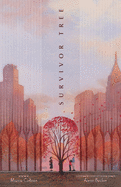
| Publisher: | Little, Brown Books for Young Readers | |
| Genre: | General, Juvenile Fiction, Historical | |
| ISBN: | 9780316487672 | |
| Pub Date: | August 2021 | |
| Price: | $18.99 |
| Children's & Young Adult |
by Marcie Colleen, illust. by Aaron Becker
Those under the impression that a hero must be a sentient being may reconsider once they've read Marcie Colleen and Aaron Becker's Survivor Tree. This reverberant picture book tells the true story of a tree that not only lived through the 9/11 attacks on the World Trade Center but endures as a symbol of hope at the very spot where, for one moment in time, all hope seemed to be lost.
The tree's story, told through mildly lyrical omniscient narration, begins unassumingly: "A tree stood steel-straight and proud at the foot of the towers that filled its sky. It grew, mostly unnoticed, silently marking the seasons." The tree changed with the seasons without incident for nearly 30 years, until the September day when "the perfect blue sky exploded."
In an author's note, Colleen (The Bear's Garden) says that the tree is a Callery pear, which is known for its "brilliant seasonal display: white blossoms in spring, green leaves in summer, red leaves in autumn, and bare branches in winter," all of which Becker (A Stone for Sascha) captures in felicitous detail with watercolors and colored pencils. He also seizes on opportunities to work dabs of charged color into his illustrations. Workers' green helmets, their orange or yellow safety vests, the red shirt of a young visitor to the 9/11 memorial--all suggest the unsinkability of post-9/11 city denizens. Survivor Tree, which marks the 20-year anniversary of 9/11, is like its subject: a stately monument to resilience. --Nell Beram, freelance writer and YA author